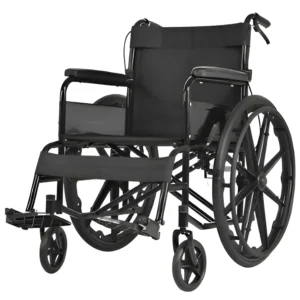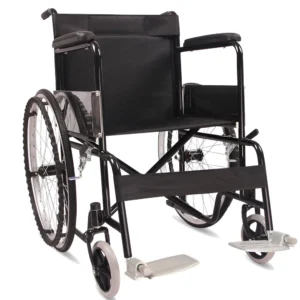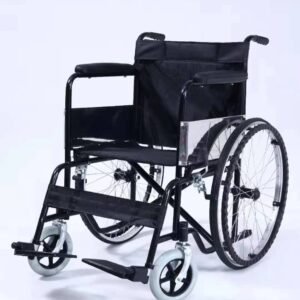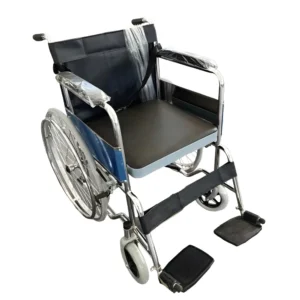Wheelchair with Removable Armrest: 5 Key Questions Answered—From Benefits to Use Cases & Buying Tips
A wheelchair with removable armrests isn’t just a mobility aid with a handy feature—it’s a solution to common challenges like transfers, tight spaces, and personalized comfort. Unlike fixed-armrest models, these wheelchairs let users or caregivers detach armrests when needed, adapting to diverse daily needs. But what makes removable armrests useful, who benefits most, and how do you choose the right model? Here are 5 critical questions answered.
1. What Defines a Wheelchair with Removable Armrest?
A wheelchair with removable armrests features armrests that can be detached or folded away, either temporarily or permanently, without tools. Key traits include:
- Removal Mechanism: Quick-release levers, buttons, or pins that let armrests detach in seconds (no screws or tools needed).
- Armrest Design: Padded, contoured, or flat rests (8–12 inches wide) that support the forearms while remaining easy to remove.
- Safety Lock: A built-in latch to prevent accidental detachment during use—critical for stability.
- Key Difference: Unlike fixed-armrest wheelchairs (permanently attached), these adapt to situations where armrests would hinder movement (e.g., transferring to a bed).
2. How Does It Differ from Wheelchairs with Fixed Armrests?
The removable feature creates distinct advantages:
- Transfer Ease: Fixed armrests block sideways transfers (e.g., from wheelchair to toilet). Removable ones eliminate this barrier, letting users slide directly onto surfaces.
- Space Adaptability: In tight spaces (e.g., narrow hallways, car trunks), detaching armrests reduces the wheelchair’s width by 4–6 inches, improving maneuverability.
- Customization: Users can remove one or both armrests based on need (e.g., keeping the left armrest for support while detaching the right for transfers).
- Maintenance Access: Removing armrests simplifies cleaning hard-to-reach areas (e.g., under the seat) or repairing upholstery.
3. Who Benefits Most from This Wheelchair?
It’s a game-changer for users and caregivers facing specific challenges:
- Users Needing Frequent Transfers: Those moving between wheelchairs, beds, or chairs (e.g., seniors, post-surgery patients) save time and reduce strain.
- Caregivers Assisting with Daily Tasks: Detachable armrests make bathing, dressing, or lifting users easier, lowering caregiver injury risk.
- Users in Tight Spaces: Apartment dwellers, office workers, or travelers benefit from the narrowed width in crowded areas.
- Individuals with Arm Mobility Issues: Those with one weak arm (e.g., stroke survivors) can remove the corresponding armrest to avoid discomfort.
4. Who Needs an Adult Wheelchair?
The best models balance functionality with safety:
- Quick-Release Mechanism: Levers or buttons that detach armrests in 2–3 seconds—critical for urgent transfers (e.g., medical emergencies).
- Adjustability: Armrests that not only remove but also adjust in height (2–4 inches) or angle to match user posture.
- Durable Materials: High-grade plastic or padded vinyl (easy to clean) with metal hardware resistant to rust or wear.
- Compatibility: Armrests that reattach securely, with no wobbling—loose fits compromise safety.
- Weight Capacity: Armrests rated to support 200+ lbs (matching the wheelchair’s overall capacity) to avoid breakage.
5. What to Consider When Buying
- Ease of Removal: Test the mechanism—caregivers or users with limited strength should be able to detach armrests without struggle.
- Safety Locks: Ensure the armrests lock firmly when attached; wiggle them to check for instability.
- Replacement Parts: Choose brands with easily replaceable armrests (e.g., Invacare, Drive Medical) in case of damage.
- Upholstery Compatibility: Removable armrests should not damage seat fabric when reattached—look for smooth edges.
- Cost: Models with removable armrests cost $50–$150 more than fixed-armrest versions but offer long-term savings in reduced caregiver strain.
Conclusion
A wheelchair with removable armrests transforms mobility by adapting to your needs, not the other way around. Whether you’re transferring, navigating tight spaces, or customizing comfort, this feature adds flexibility that fixed-armrest models can’t match. For users and caregivers prioritizing ease, safety, and adaptability, it’s an investment in daily independence.
Thank you for reading this, dear, if you have any suggestions about notre site web or want to know about wheelchair, please nous contacter. We will respond quickly.



